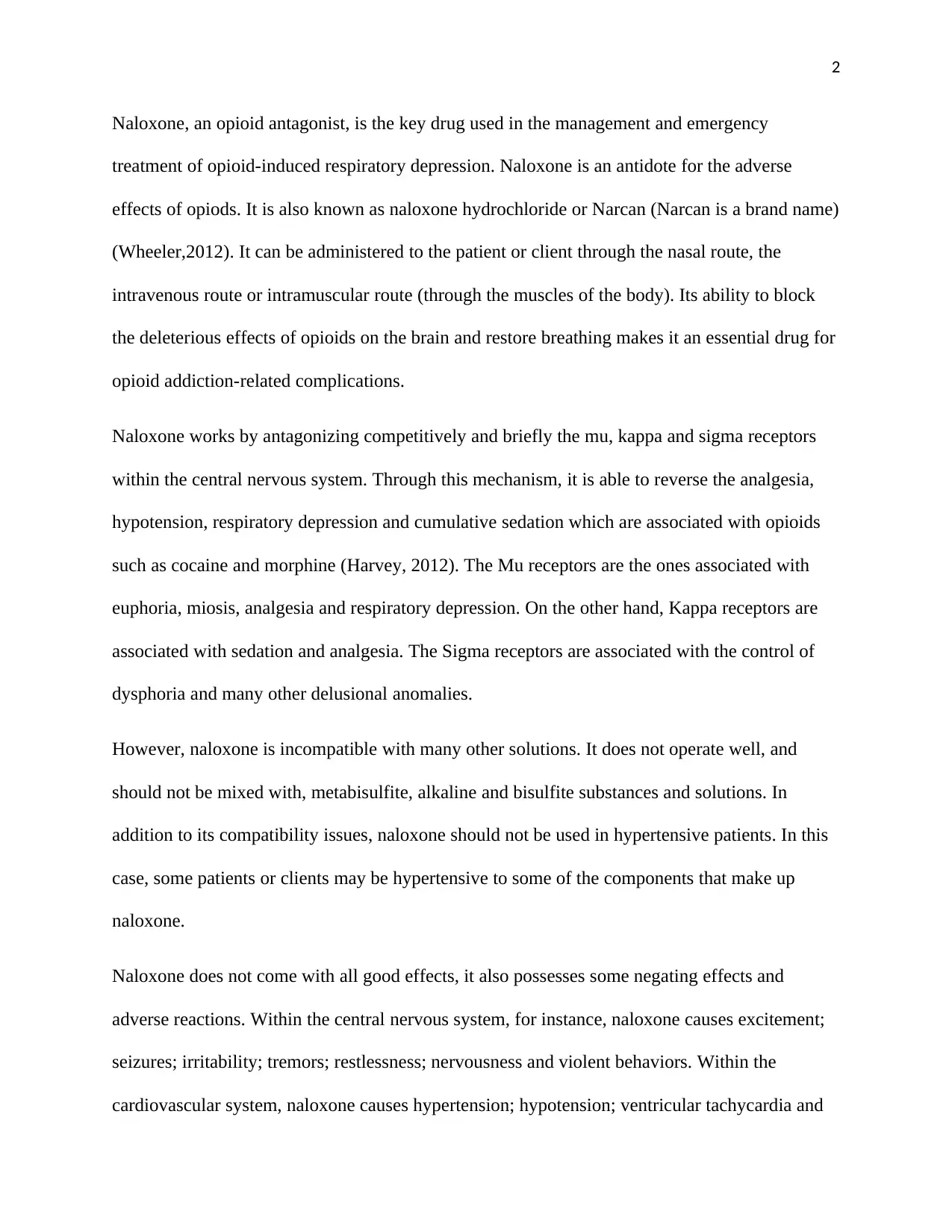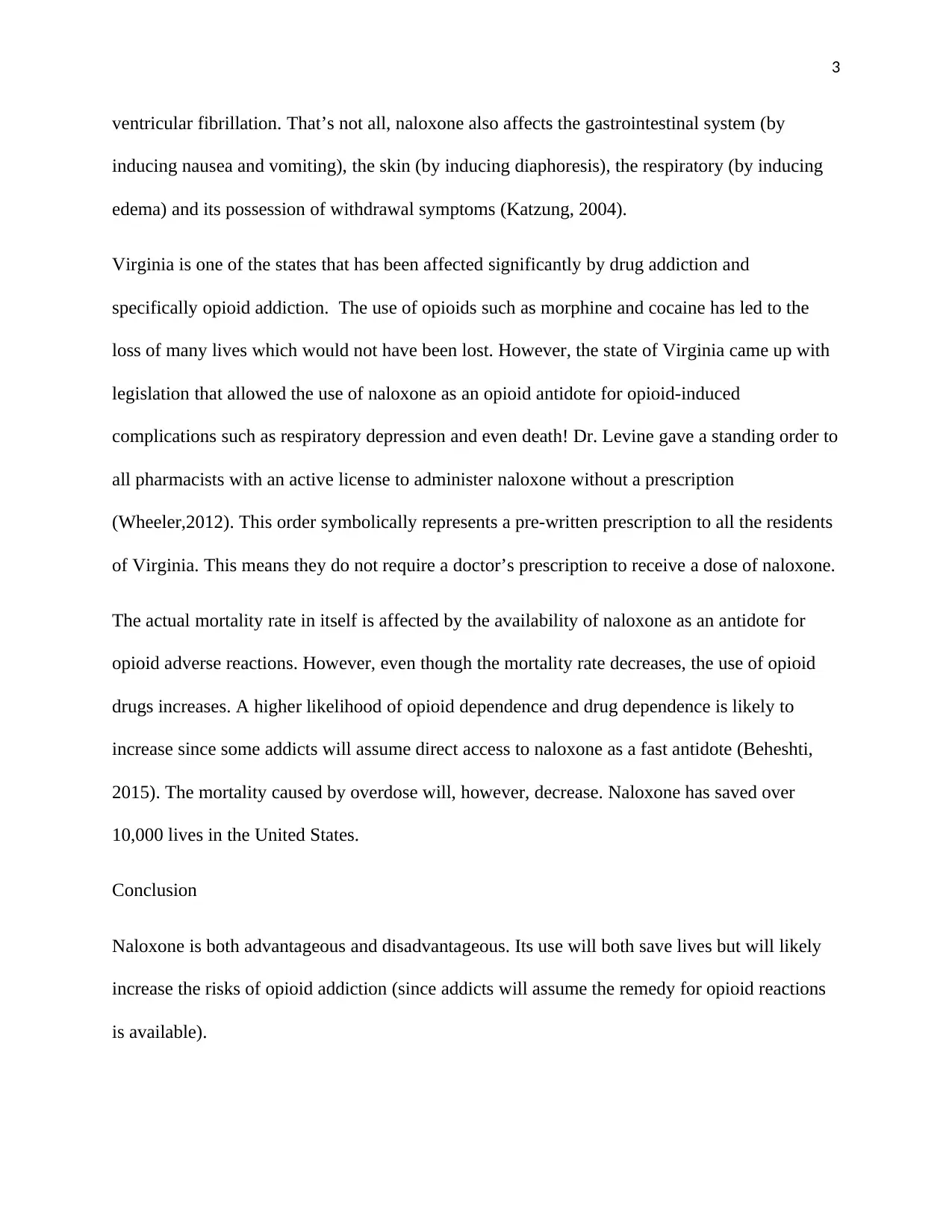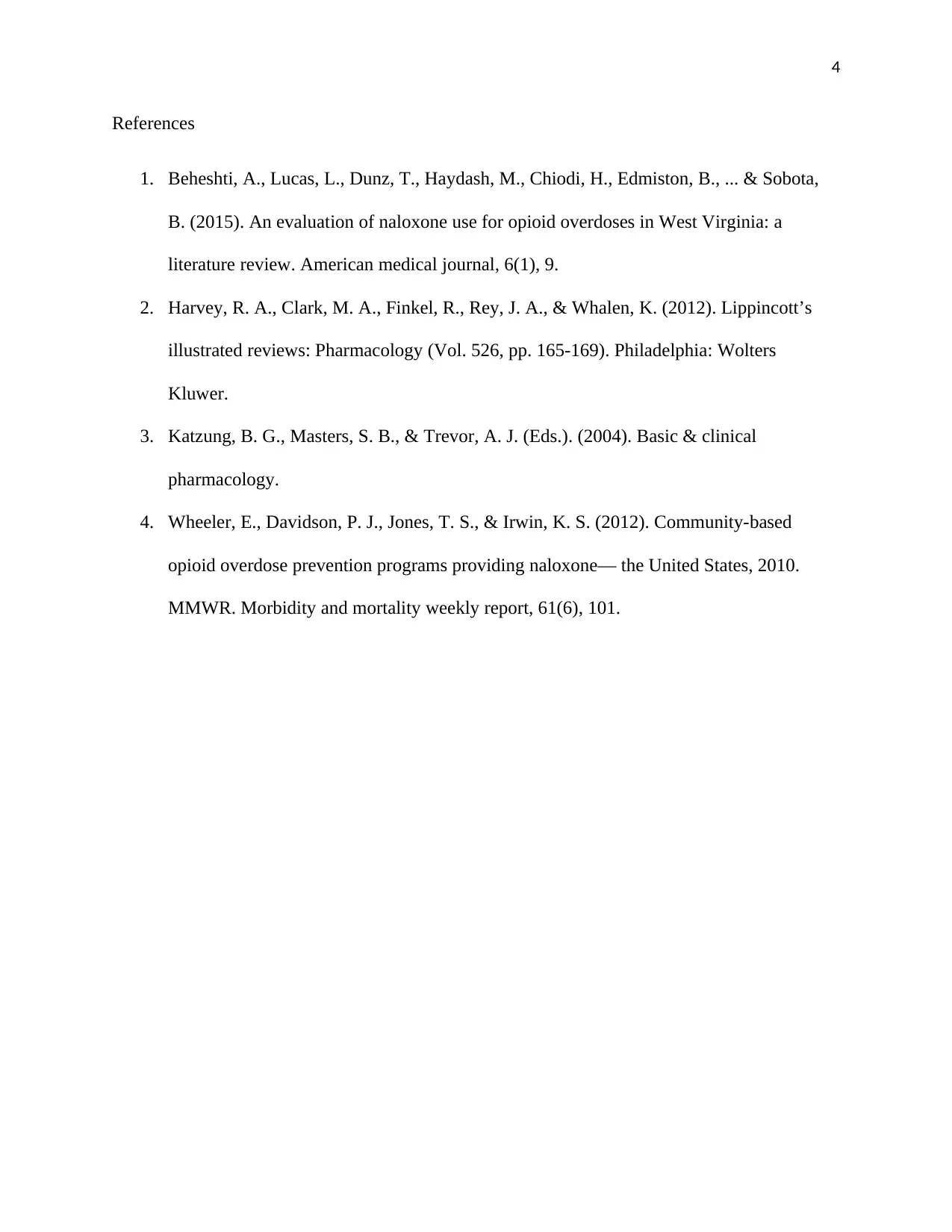Naloxone's Role: Benefits, Risks & Impact on Opioid Addiction Crisis
VerifiedAdded on 2023/06/15
|4
|858
|63
Essay
AI Summary
This essay provides a comprehensive analysis of naloxone, an opioid antagonist crucial for managing opioid-induced respiratory depression. It details naloxone's mechanism of action, highlighting its competitive antagonism of mu, kappa, and sigma receptors in the central nervous system to reverse the effects of opioids like cocaine and morphine. While naloxone effectively reverses analgesia, hypotension, and respiratory depression, it also presents adverse reactions such as excitement, seizures, and cardiovascular issues. The essay further discusses Virginia's standing order, allowing pharmacists to administer naloxone without a prescription, and examines the dual impact of increased naloxone availability: reduced mortality from overdoses versus potential increased opioid dependence due to a perceived safety net. The conclusion acknowledges naloxone's life-saving potential while cautioning about the possible exacerbation of opioid addiction risks, supported by relevant references.
1 out of 4






![[object Object]](/_next/static/media/star-bottom.7253800d.svg)